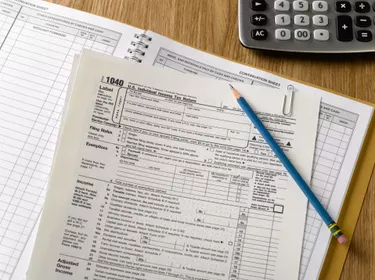
If an employer doesn't send a W-2 form, both the employer and the employee are still liable for federal income taxes. The employee will have to estimate federal gross income and provide additional information to the Internal Revenue Service (IRS), such as dates worked and rate of pay. It is the responsibility of the employer to send a W-2 to the employee.
Employer Won't Send the W-2
Video of the Day
Employers are responsible for providing W-2 forms to all their employees. When the employer does not send the W-2, the employee should ask the employer to provide it. According to the IRS, if the employer does not send the form to the employee by Feb. 15, the employer should ask the IRS to demand the form from the employer. The IRS will then step in and tell the employer that it must provide the form within 10 days or face penalties.
Video of the Day
Consider also: W2- Forms: What It Is, Who Gets One & How It Works
W-2 Substitute Form 4852
Filing your tax return without a form W-2 will slow down processing of your return. One option is to send in the substitute Form 4852 instead. The IRS allows an employee to turn in this form if the employer refuses to send a W-2, if the W-2 sent by the employer is wrong, or if the employee cannot contact the employer, for example, the employer has gone out of business.
Form 4852 also serves as a substitute for the income-reporting Form 1099-R in case the employee cannot get information from the manager of a pension, annuity or other investment vehicle.
Educated Guess on Tax Liability
Form 4852 allows an employee to estimate income to make an educated guess about her federal income tax liability. The taxpayer must explain to the IRS how this estimate was calculated. The taxpayer's final pay stub can help provide these figures and prove to the IRS that they have not been plucked from the air.
Form 4852 allows an employee to estimate many types of income, including from insurance, annuities, retirement accounts and other sources.
Penalties for Misuse
The employee can be penalized for submitting an inaccurate estimate. The IRS can charge a penalty of up to 75 percent of the employee's total tax liability for civil fraud, which means that the IRS does not need to prove to a court that the employee committed criminal fraud to assess the penalty. The IRS can also fine the employee $5,000 for submitting a frivolous federal income tax return.
You may decide to wait for your official W-2 to avoid the risk of penalties. Filing Form 4868 will give you an additional six months to file your tax return, during which time you can continue to chase your employer for form W-2.
Consider also: Filing an Extension for Taxes
Paying State Taxes
The employee also needs the W-2 to pay state income taxes. A state either allows a taxpayer to submit the federal Form 4852 along with the state income tax return, or provides a state version of Form 4852 that the taxpayer must submit if the state needs additional information that the federal form doesn't provide.